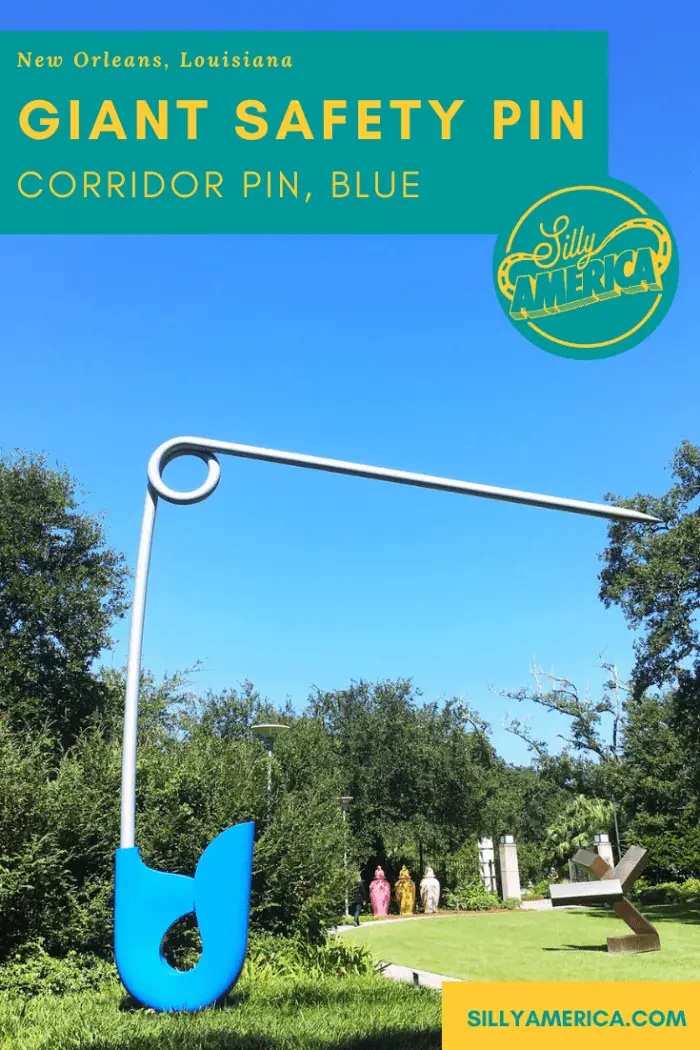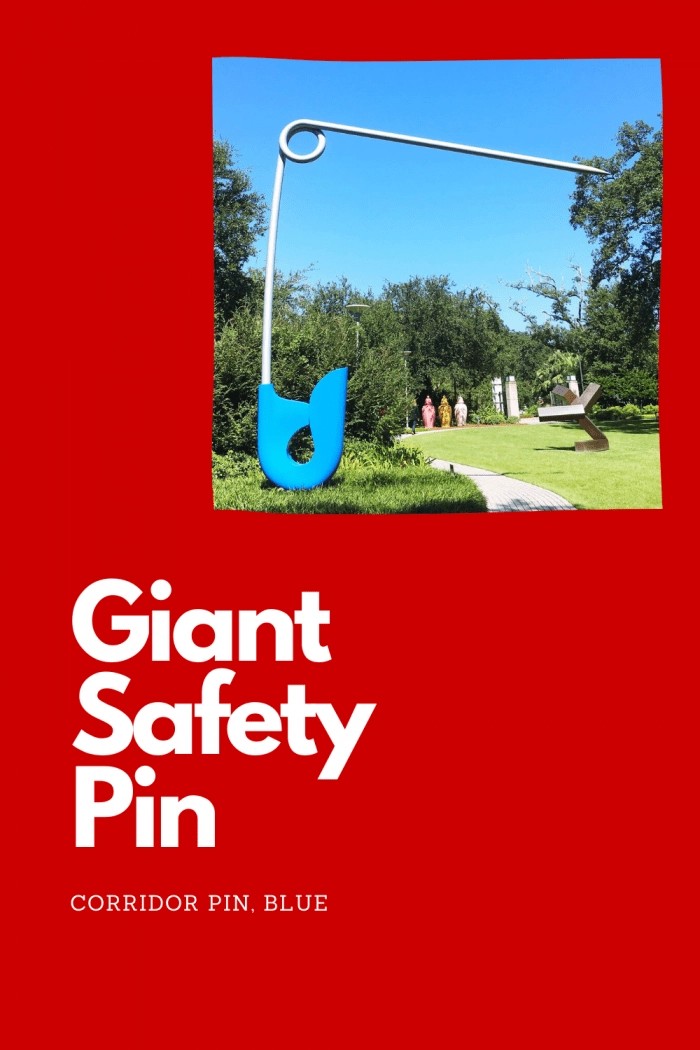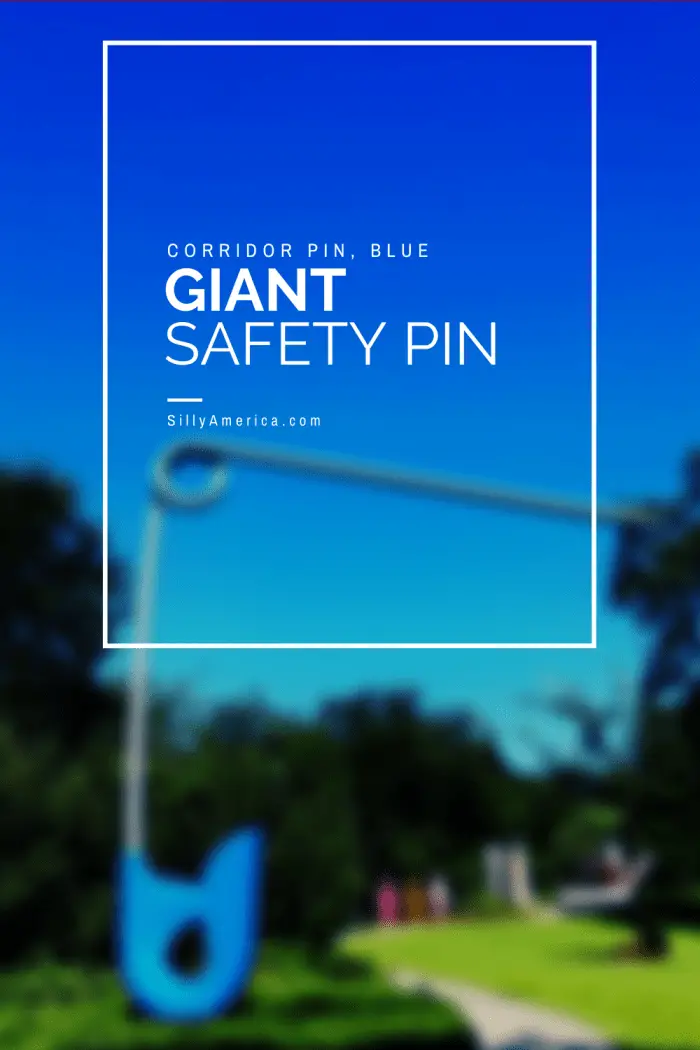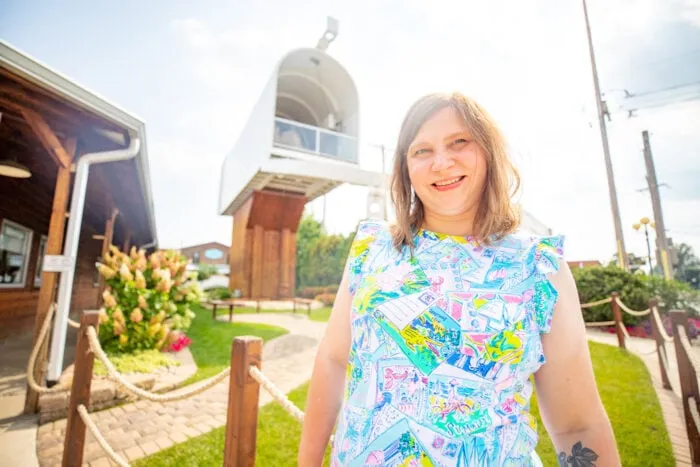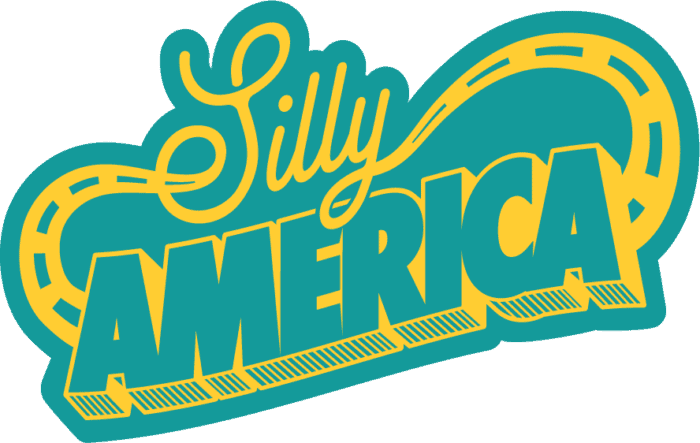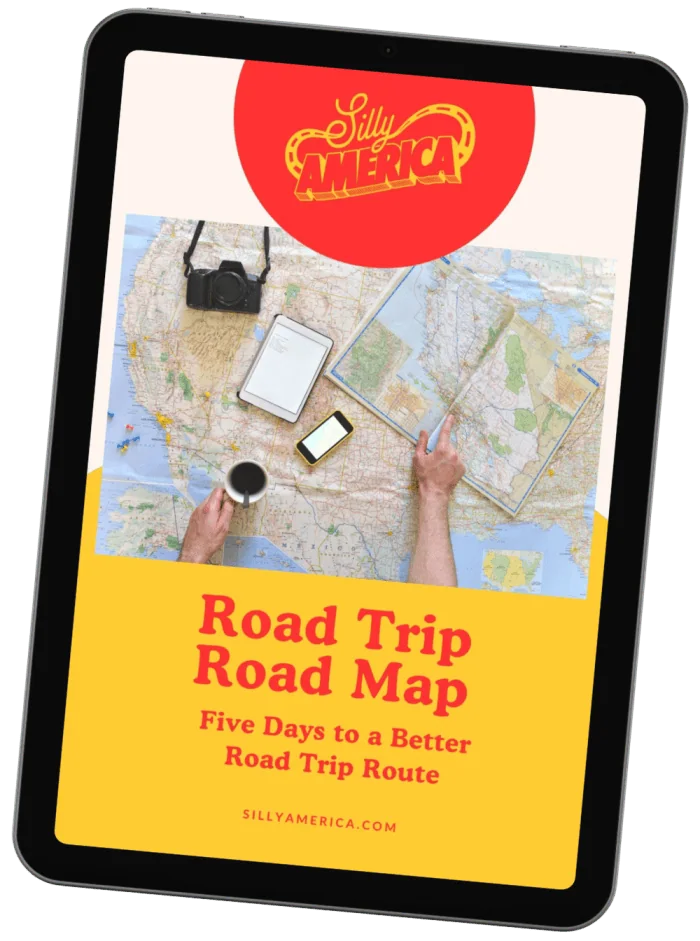Safety pins are a useful little mechanism designed to fasten fabric together while protecting users from the clasp’s sharp point. In the late 70s and 80s, they became a mainstay of punk fashion. In the late 2010s they became a symbol of solidarity and trust for victims of racism. And, in the 90s, they became the inspiration for a popular piece of pop art by Claes Oldenburg and Coosje van Bruggen, a giant safety pin also known as Corridor Pin, Blue.
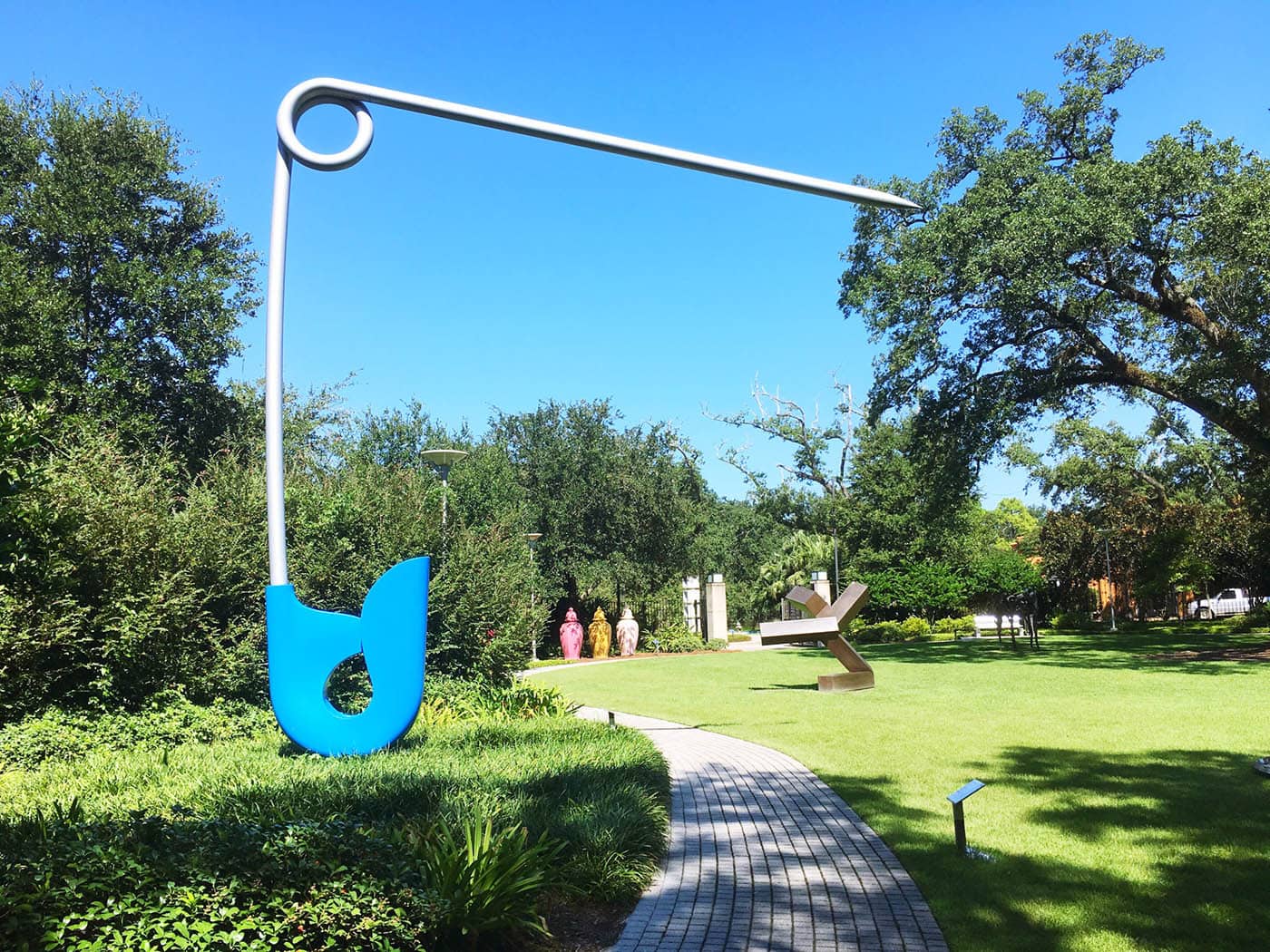
Corridor Pin, Blue AKA the giant safety pin is a 21-foot tall sculpture made of stainless steel and aluminum with blue acrylic polyurethane enamel.
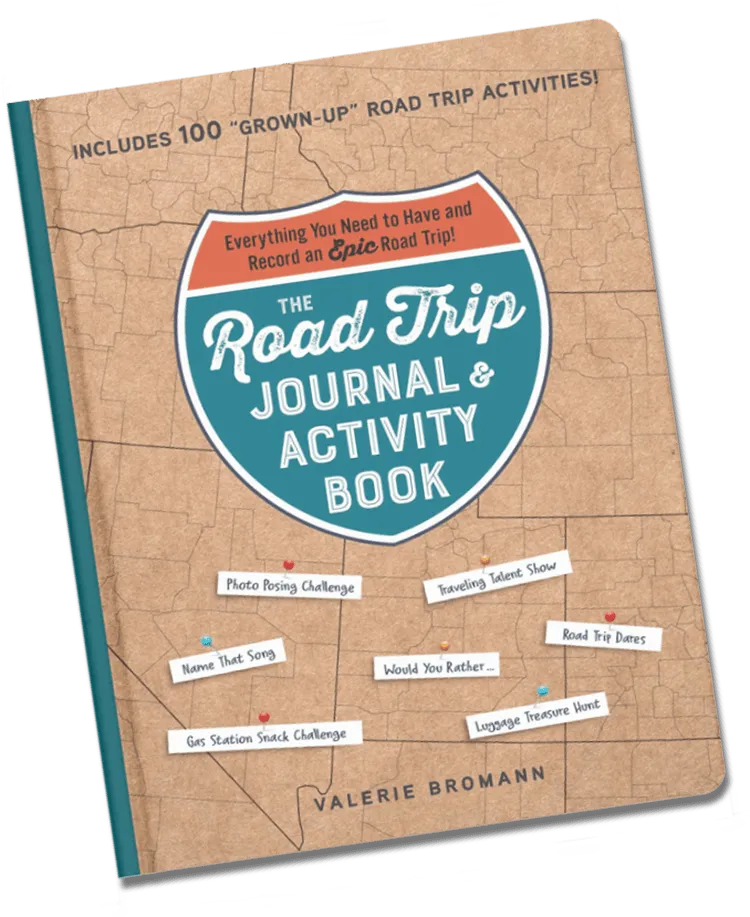
The Road Trip Journal & Activity Book
Enjoy fun games and challenges to pass the time on your next road trip and have a keepsake to look back on for years to come with this entertaining must-have for your next vacation.
Claes Oldenburg and Coosje van Bruggen created many giant versions of everyday things while they were married (sadly van Bruggen passed away in 2009). Some of their other giant artwork include Batcolumn in Chicago, Illinois; Spoonbridge and Cherry in Minneapolis, Minnesota; Plantoir Giant Garden Trowel in Des Moines, Iowa; and the Free Stamp in Cleveland, Ohio.
This version of the world’s largest safety pin can be found at the Sydney and Walda Besthoff Sculpture Garden at the New Orleans Museum of Art in New Orleans, Louisiana. It was installed there in 1999, but there are several other copies in existence. One has been on display in the Sculpture Garden of San Francisco’s De Young Museum since 1999. An “artist’s proof” was installed at the Nasher Museum of Art at Duke University in Durham, North Carolina, in August 2019 (which is, most likely, the same one that used to live at Northpark Center in Dallas, Texas). And there may even be a fourth one at Oldenburg and van Bruggen’s Chateau de la Borde in Loire Valley, France.
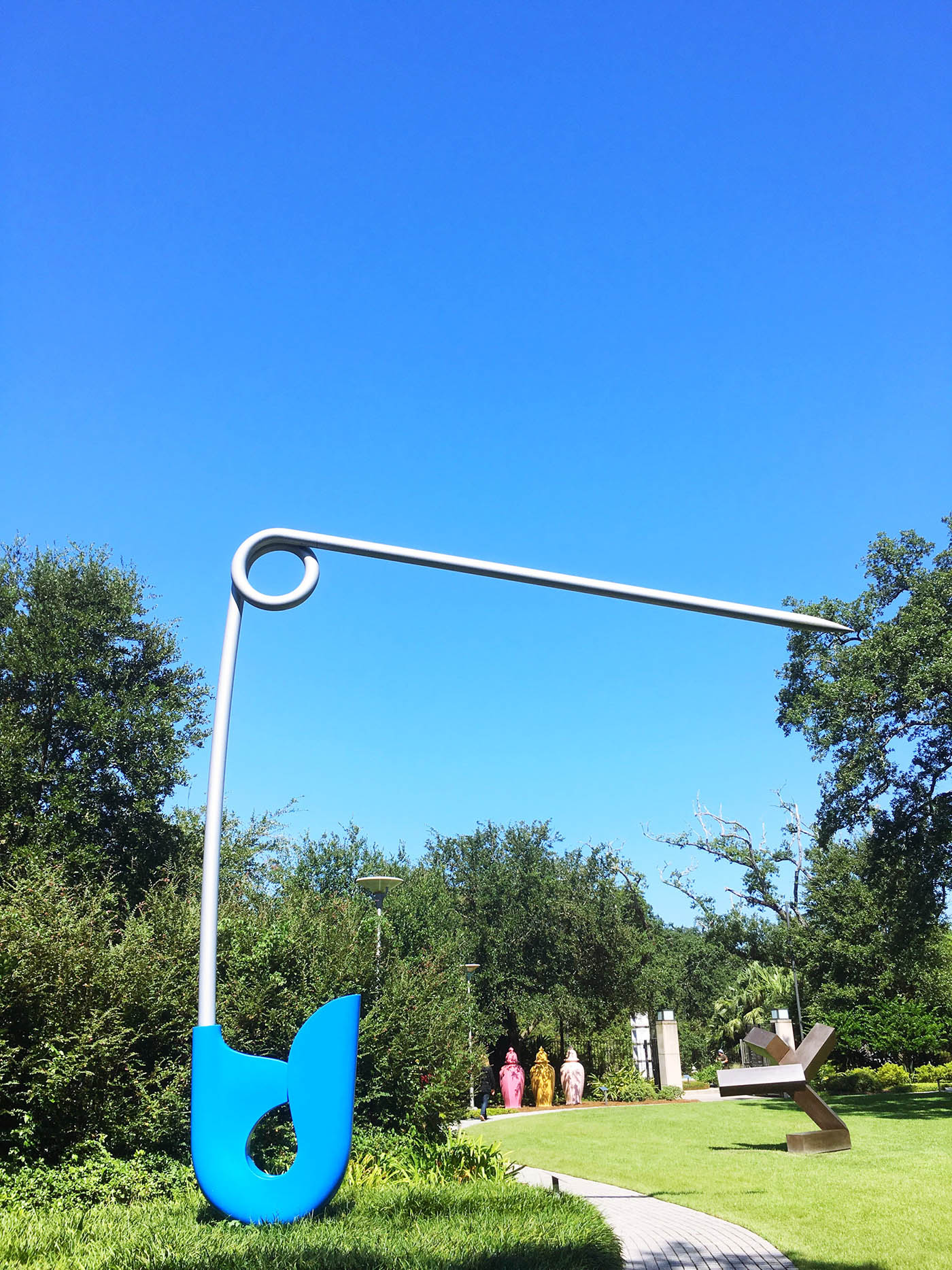
Giant Safety Pin – Corridor Pin, Blue
Address: Sydney and Walda Besthoff Sculpture Garden, New Orleans Museum of Art, 1 Collins Diboll Cir, New Orleans, LA 70124
Hours: 10 am – 5 pm, daily (October 1 – March 31); 10 am – 6 pm, daily (April 1 – September 30)
Cost: Free Admission
Pin this New Orleans Roadside Attraction:
